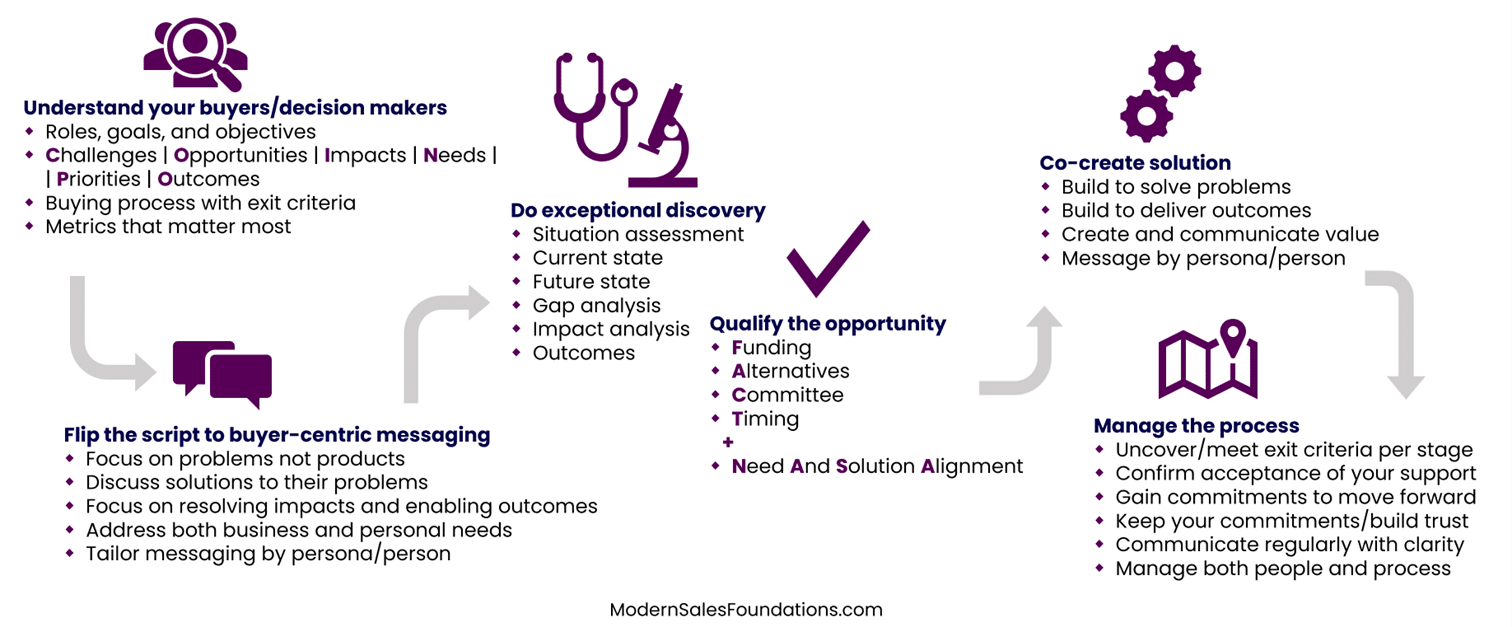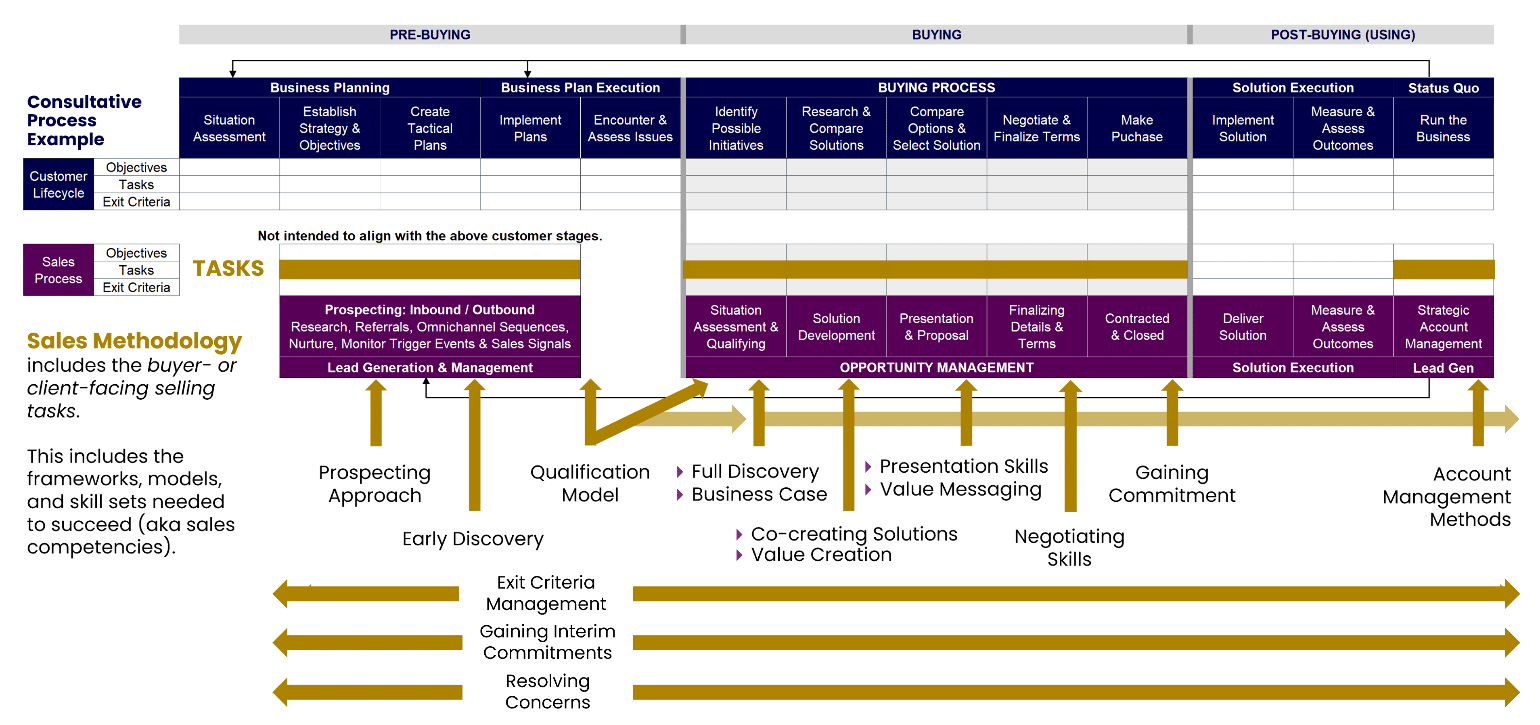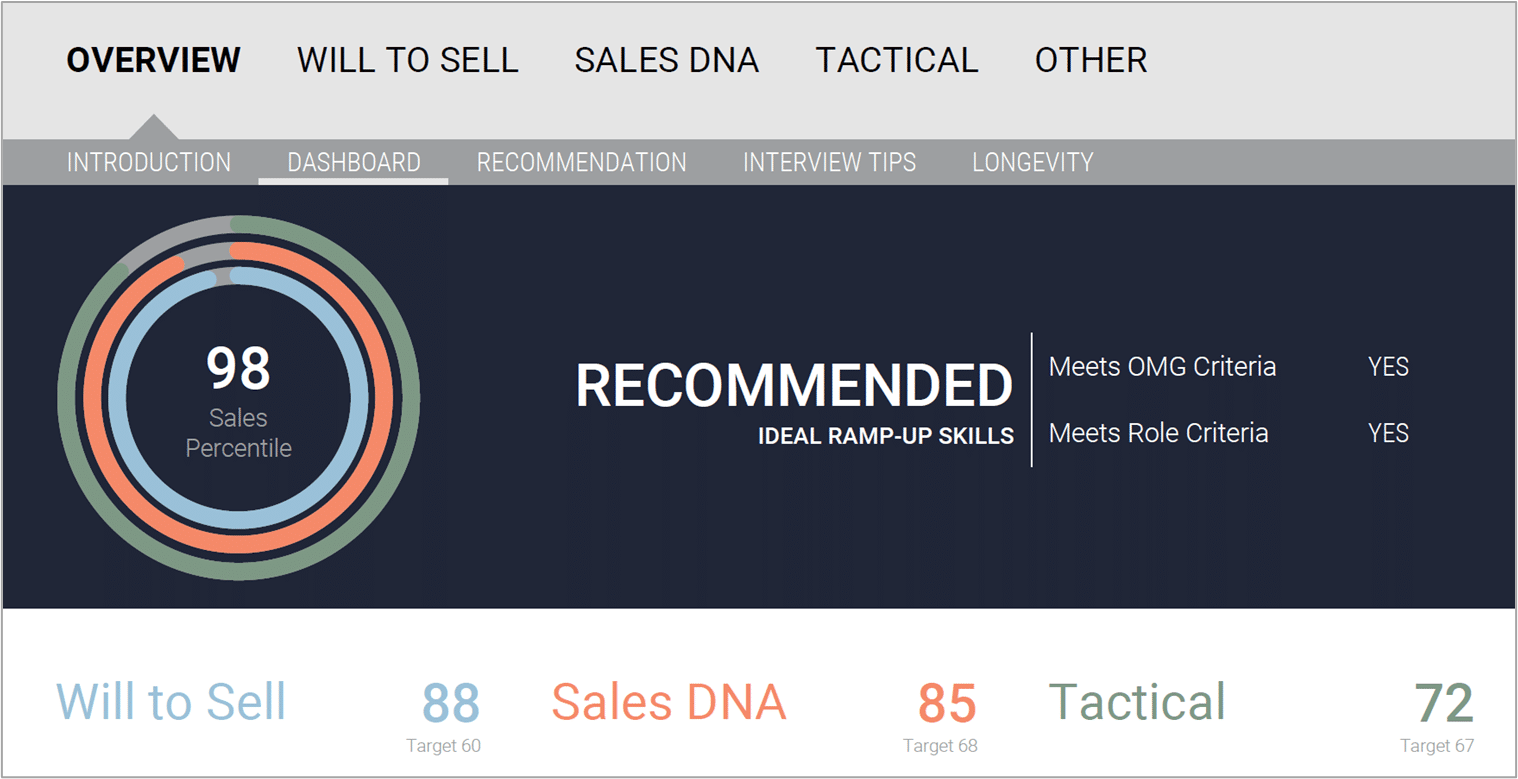As a sales effectiveness advisor for many years, I’ve seen so many companies that had the potential to radically improve sales results – in some cases, to double them – without adding any salespeople.
One that I worked with more than doubled their revenue in a year. Several others achieved incredible results that were close. Many, however, did not take significant action and little changed.
Why would leaders ignore this kind of opportunity? There are a few common reasons that I’ve seen. Most often, it’s because:
- Leaders were willing to settle for the performance they were getting and didn’t want to shake things up by putting more effective sales processes, systems, practices and sales methodologies in place.
- Not many wanted to change how their sales managers work and put a sales management operating system in place.
- They felt they knew their customers well enough, so they didn’t do research to understand why their buyers buy from them, and why others do not.
- They didn’t shift to a completely buyer-centric approach, modify sales models, align sales process to buying process and ensure the methodology was adopted at high levels.
To do these things, they would have had to accept that some of their sellers and managers would not like the changes (at first, until they saw better results). There is almost always resistance to change when it moves people out of their comfort zones. And for distributors whose sales forces have never been managed closely, the resistance creates conflict, which makes leaders stop pushing for change. And because of that, they basically decide to accept what they get, rather than reengineer and “go for the gold.”
Does this sound familiar to you? If so, you are not alone. According to a study by Gartner, only 54.3% of salespeople met or exceeded their quota in 2023, down from 60.9% in 2022. This means that almost half of the sales force is underperforming, and the gap between the top performers and the rest is widening. The same study also found that only 31.8% of sales organizations have a formal sales process, and only 18.1% of them report that their salespeople follow it consistently. This indicates a lack of alignment, discipline and effectiveness in the way sales are conducted. These are general market statistics, but in my experience over the past 5 years, they certainly apply to wholesale distribution.
So, what can you do to turn this situation around and achieve radically improved sales results this year and beyond? Here are some steps that you can take to transform your sales organization and unleash its full potential.
Conduct Thorough Buyer Research
The first step is to accept that you may not know your customers and market as well as you think. This cognitive bias holds many back from achieving more. You must understand your buyers better than ever . You need to know who they are, what they want, how they think, how they buy and why they choose you or your competitors. You need to go beyond the surface level of demographics and dig deeper into the motivations, challenges, goals, preferences and behaviors of your buyers. You need to map out their buying journey, identify their key decision criteria and uncover their hidden concerns.
How do you do this? You can use various methods, such as surveys, interviews, focus groups, observation, analytics and social listening. Building buyer personas and archetypes through research (not internally) is one part of this. You can have an expert conduct Win-Loss Analysis and form a Customer Advisory Board. You can also leverage your existing customer data, such as CRM records, feedback, testimonials and referrals. The key is to collect both quantitative and qualitative data and analyze them to generate insights that can inform your sales strategy and tactics.
Read more: How Distributors Can Exit “The Sales Prevention Business”
Adopt a Buyer-centric Sales Approach

How do you do this? You can use various tools, such as buyer personas, buyer journey maps, value stories, sales plays and adjusted messaging. You can also use various techniques, such as conducting far deeper discovery, qualifying appropriately and building compelling business cases. The key is to tailor your sales approach to your buyer’s situation – their challenges, opportunities, impacts, outcomes, and priorities – and to deliver value at every touchpoint, from their perspective.
Implement a Proven Sales Methodology

How do you do this? Well, if you have internal expertise, you can build one based on your buyer research and the best practices of your top performers. Or you can buy one. In either case, ensure it is modern, buyer-centric, consultative, value focused and outcome oriented, and that it covers the entire customer lifecycle. The key is to select or develop a sales methodology that fits your sales context, customers, goals and culture, and to train your salespeople and managers on how to use it effectively.
Multiple studies have shows that sales forces with high levels of adoption (75% or greater) of a formal sales process and sales methodology, achieve significantly higher win rates, quota attainment percentages, and annual revenue plan attainment percentages. The data confirm it, yet most distributors haven’t yet acted on it.
Read more: Explore a Proven Sales Methodology
Reinforce and Measure your Sales Performance
The next step is to ensure that your sales performance is sustained and improved over time. You need to reinforce your sales processes, systems, practices and methodologies, and to make sure that they are followed and applied by your salespeople and managers. You also need to measure your sales results, activities and behaviors, and to use the data to identify gaps, opportunities, and trends. And it’s important to provide feedback, coaching, recognition and incentives to your sales team to help them grow and excel.
How do you do this? You can use various tools, such as CRM, sales enablement platforms, dashboards and scorecards. You can also use various methods, such as sales reviews, pipeline management, forecasting and analytics. The key is to establish a culture of accountability, transparency and continuous improvement, and to foster a collaborative and supportive sales environment.
What gets measured, gets done. And what gets asked about gets attention and focus.
Adapt your Hiring Practices

How do you do this? You can use competency-based assessments to identify true top performers. Competency-based assessments are tools that measure a salesperson’s mindset, beliefs and essential skills. They can help you evaluate a salesperson’s fit, potential and readiness for your sales role and organization. They can also help you reduce hiring bias, increase hiring accuracy and save hiring time and cost.
Some examples of competencies that you can assess are:
- Sales mindset: This measures a salesperson’s attitude, motivation, commitment, drive (or “grit”), accountability and coachability.
- Sales beliefs (or “Sales DNA”): This measures a salesperson’s core beliefs about selling, buyers and themselves. It can help you determine what’s underneath a salesperson’s behaviors.
- Sales skills: This measures a salesperson’s ability to perform various sales tasks, such as prospecting, qualifying, presenting, consultative and value selling, negotiating and closing. It can help you determine a salesperson’s proficiency, experience and competence.
You can use these assessments at various stages of your hiring process, such as screening, interviewing and onboarding. You can also use them to benchmark your existing sales team and identify their strengths and weaknesses. The key is to use valid, reliable and relevant assessments that are statistically validated, and to interpret and use the results wisely.
Read more: Advice You Need to Hear About Hiring Salespeople
Resolve the Resistance from Your Team
These are great ideas, but none matter if you can’t get them implemented. Let’s go back to the topic of resistance.
Change reluctance is not only a challenge you face with your prospects and customers, but also from your own sales team. When you introduce a new process, policy, strategy or methodology, you may encounter pushback or resistance from your sellers and front-line sales managers. They may be skeptical of the benefits, worried about the risks or simply comfortable with the status quo. Many distribution sales forces just don’t want to be to be held accountable after having so much freedom for so long.
I have seen this firsthand with clients, and the response from leadership will make all the difference. Will be another average year, or will they win the proverbial gold medal?
How can you tackle this resistance head on and get your team on board with the change? Here are some tips to help you communicate the need for change and support your team through it, while also setting clear expectations and consequences.
- Explain the “why” behind the change. Don’t just tell your team what to do, but also why you’re doing it. Share the vision, goals and benefits of the change, as well as how it will help them achieve better results, solve problems or overcome challenges. Use data, facts and examples to back up your claims and show the value of the change. As a mentor used to say, “It’s always better to pull than push, until it becomes necessary to push.”
- Involve your team in the change process. Unless it’s a situation that is critical for survival, don’t just impose the change from the top down, but rather seek input and feedback from your team. Ask them about their concerns, questions and suggestions, and address them openly and honestly. Incorporate their ideas and opinions into the change plan and show them that you value their contribution and expertise.
- Provide training and support. Don’t expect your team to adopt the change overnight, but rather provide them with the necessary training and support to make the transition smooth and successful. Provide them with the right tools, resources, and guidance to learn and implement the change. Offer coaching, mentoring and feedback to help them improve and overcome any difficulties.
- Recognize and reward. Don’t take your team’s efforts for granted, but rather recognize and reward them for embracing the change and achieving positive outcomes. Celebrate their wins, big and small, and show appreciation for their hard work and dedication. Provide incentives, recognition and rewards that are meaningful and motivating for your team.
- Hold your team accountable. Don’t let your team get away with resistance, but rather hold them accountable for following the change and meeting expectations. Set clear, measurable goals and metrics and then monitor and track their performance and progress. Provide constructive feedback and coaching to help them improve, but also enforce consequences for non-compliance or poor performance.
- Resolve concerns like a salesperson. There are outstanding and humanistic processes available to help salespeople resolve buyer’s concerns. Why not use the same methods? They work. Here are two articles about such a process, which might be helpful:
- Alleviate Sales Training Pushback from Your Veteran Reps
- Rethinking the Sales Approach to Objections
By following this advice, you can resolve sales resistance from your team (or eventually, if necessary, remove dissenters) and lead them through the change with confidence and competence. Remember, change is inevitable and necessary for growth and success, and you have the power and responsibility to make it happen.
Closing Thoughts
If you want to go beyond the norm and achieve outstanding sales results this year and beyond, you need to stop settling for average and go for the gold.
- Rethink and redesign your sales organization and implement the changes that can make a difference.
- Conduct thorough buyer research, adopt a buyer-centric sales approach, implement a proven sales methodology, reinforce and measure your sales performance, hire better and manage resistance effectively.
By doing these things, you can unleash the full potential of your sales team and deliver even higher value to your buyers and your business.
And if you hope to see change and reap the rewards of better results, you need to be ready to face the resistance head-on.
Your journey to unparalleled success starts now. If you need help or advice along the way, you know where to find me. And if not, I’d still enjoy hearing about your journey and successes. Feel free to reach out at any time.
Mike Kunkle is an internationally recognized expert on sales enablement, sales effectiveness, sales training, sales coaching, sales management, and sales transformations.
He’s spent over 30 years helping companies drive dramatic revenue growth through best-in-class enablement strategies and proven effective sales systems.
Mike is the founder of Transforming Sales Results, LLC where he designs sales training, delivers workshops, and helps clients improve sales results through a variety of sales effectiveness practices and advisory services.
He collaborated to develop SPARXiQ’s Modern Sales Foundations™ curriculum and authored their Sales Coaching Excellence™ and Sales Management Foundations™ courses.
Mike's book, The Building Blocks of Sales Enablement, is available on Amazon, with others coming soon in 2026, starting with The CoNavigator Method for B2B Selling.

